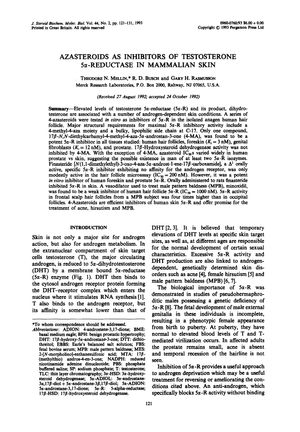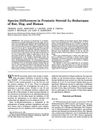Azasteroids as Inhibitors of Testosterone 5α-Reductase in Mammalian Skin
February 1993
in “
Journal of steroid biochemistry and molecular biology/The Journal of steroid biochemistry and molecular biology
”
4-azasteroids testosterone 5α-reductase 5α-R 17β-N,N-diethylcarbamyl-4-methyl-4-aza-5α-androstan-3-one 4-MA human hair follicles foreskin genital fibroblasts prostate 17β-hydroxysteroid dehydrogenase 5α-R isozymes finasteride minoxidil male pattern baldness MPB frontal scalp hair follicles occipital follicles acne hirsutism Propecia Rogaine MPB

TLDR Certain 4-azasteroids are effective at blocking the enzyme that processes testosterone in human skin and could help treat acne, excessive hair growth, and male pattern baldness.
In a study from 1993, a series of 4-azasteroids were tested for their ability to inhibit testosterone 5α-reductase (5α-R) in human hair follicles and other tissues. The most potent inhibitor found was 17β-N,N-diethylcarbamyl-4-methyl-4-aza-5α-androstan-3-one (4-MA), which showed strong inhibitory activity in human hair follicles, foreskin, genital fibroblasts, and prostate, without affecting 17β-hydroxysteroid dehydrogenase activity. The study suggested the existence of at least two 5α-R isozymes in humans due to the varying effectiveness of azasteroid inhibitors in the prostate versus skin. Finasteride, a specific 5α-R inhibitor, was less effective in hair follicles but potent in foreskin and prostate, and it reduced 5α-R when orally administered to rats. Minoxidil, a treatment for male pattern baldness (MPB), was a weak inhibitor of 5α-R in human hair follicles. Additionally, 5α-R activity was found to be four times higher in frontal scalp hair follicles from an MPB subject compared to occipital follicles. The findings indicated that 4-azasteroids could be promising for treating acne, hirsutism, and MPB due to their efficiency in inhibiting human skin 5α-R.









